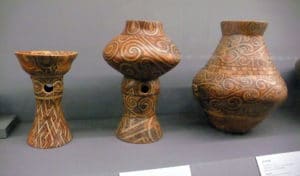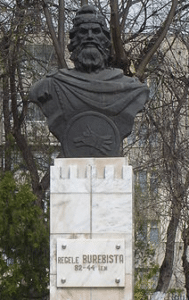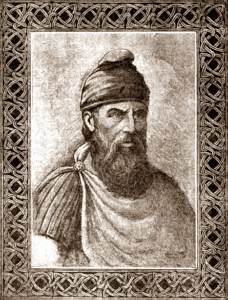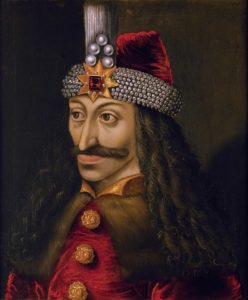
The Cucuteni–Trypillia culture—the best known archaeological culture of Old Europe—flourished in Muntenia, southeastern Transylvania and northeastern Moldavia in the 3rd millennium BC. The first fortified settlements appeared around 1800 BCE, showing the militant character of Bronze Age societies.
Antiquity:
Greek colonies established on the Black Sea coast in the 7th century BCE became important centers of commerce with the local tribes. Centuries later, Strabo associated the Getae with the Dacians who dominated the lands along the southern Carpathian Mountains in the 1st century BCE. Burebista was the first Dacian ruler to unite the local tribes. He also conquered the Greek colonies in Dobruja and the neighboring peoples as far as the Middle Danube and the Balkan Mountains between around 55 and 44 BCE. After Burebista was murdered in 44 BCE, his kingdom collapsed.

The Romans reached Dacia during Burebista’s reign and conquered Dobruja in 46 CE. Dacia was again united under Decebalus around 85 CE. He resisted the Romans for decades, but the Roman army defeated his troops in 106 CE. Emperor Trajan transformed Banat, Oltenia and the greater part of Transylvania into a new province called Roman Dacia, but Dacian, Germanic and Sarmatian tribes continued to dominate the lands along the Roman frontiers. The Romans pursued an organized colonization policy, and the provincials enjoyed a long period of peace and prosperity in the 2nd century.

The Carpians, Goths and other neighboring tribes made regular raids against Dacia from the 210s. The Romans could not resist, and Emperor Aurelian ordered the evacuation of the province Dacia Trajana in 271.
Middle Ages:
The Goths were expanding towards the Lower Danube from the 230s, forcing the native peoples to flee to the Roman Empire or to accept their suzerainty. The Goths’ rule ended abruptly when the Huns invaded their territory in 376, causing new waves of migrations. The Huns forced the remnants of the local population into submission, but their empire collapsed in 454. The Gepids took possession of the former Dacia province. The nomadic Avars defeated the Gepids and established a powerful empire around 570. The Bulgars, who also came from the Eurasian steppes, occupied the Lower Danube region in 680.
The Magyars (or Hungarians) took control of the steppes north of the Lower Danube in the 830s, but the Bulgarians and the Pechenegs jointly forced them to abandon this region for the lowlands along the Middle Danube around 894.

Byzantine missionaries proselytized in the lands east of the Tisa from the 940s and Byzantine troops occupied Dobruja in the 970s. The first king of Hungary, Stephen I, who supported Western European missionaries, defeated the local chieftains and established Roman Catholic bishoprics (office of a bishop) in Transylvania and Banat in the early 11th century.
The Mongols destroyed large territories during their invasion of Eastern and Central Europe in 1241 and 1242. A local dynasty ruled the Despotate of Dobruja in the second half of the 14th century, but the Ottoman Empire took possession of the territory after 1388.
